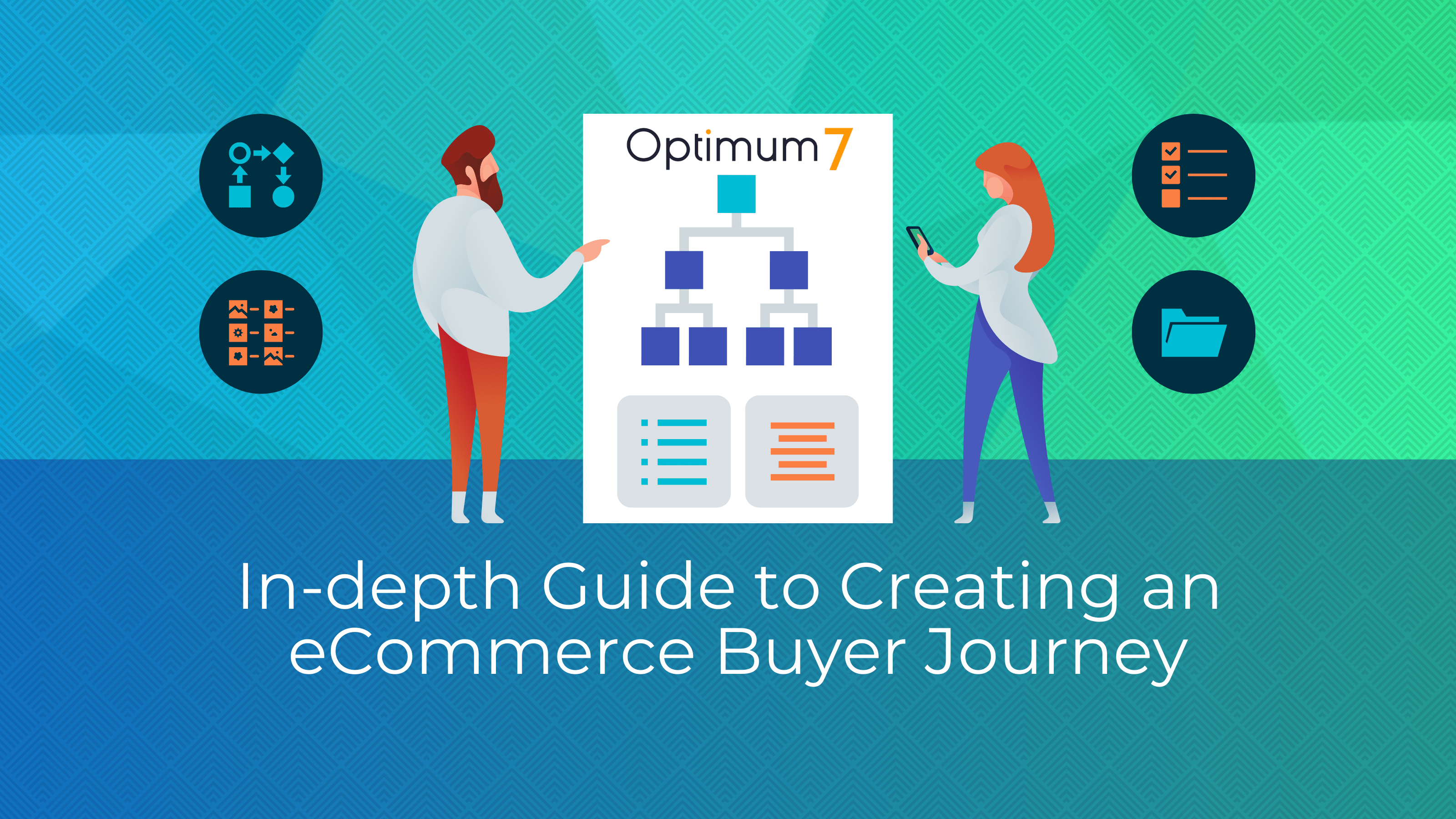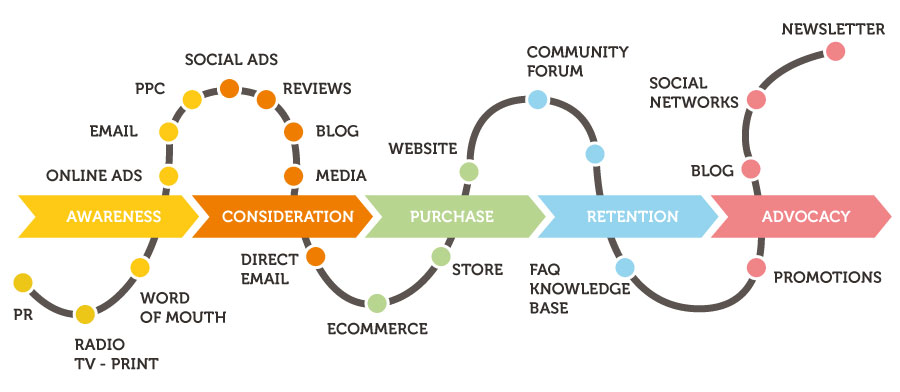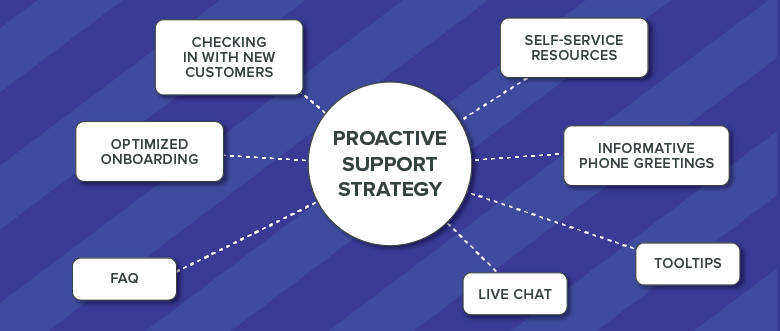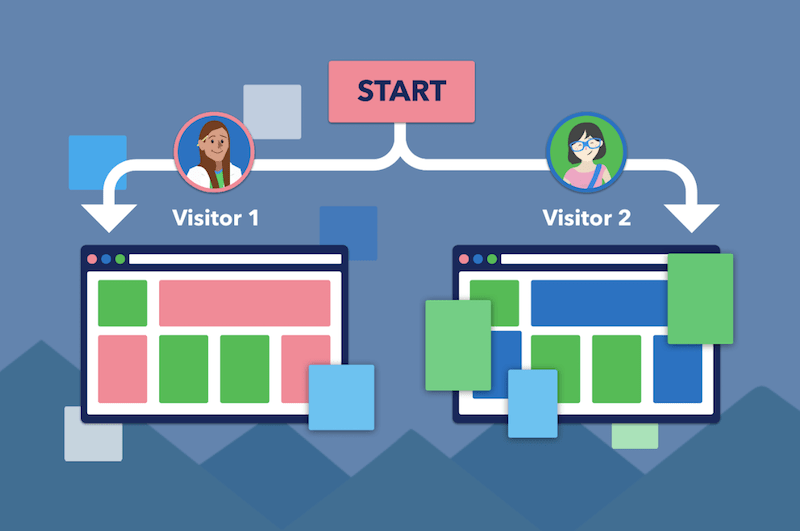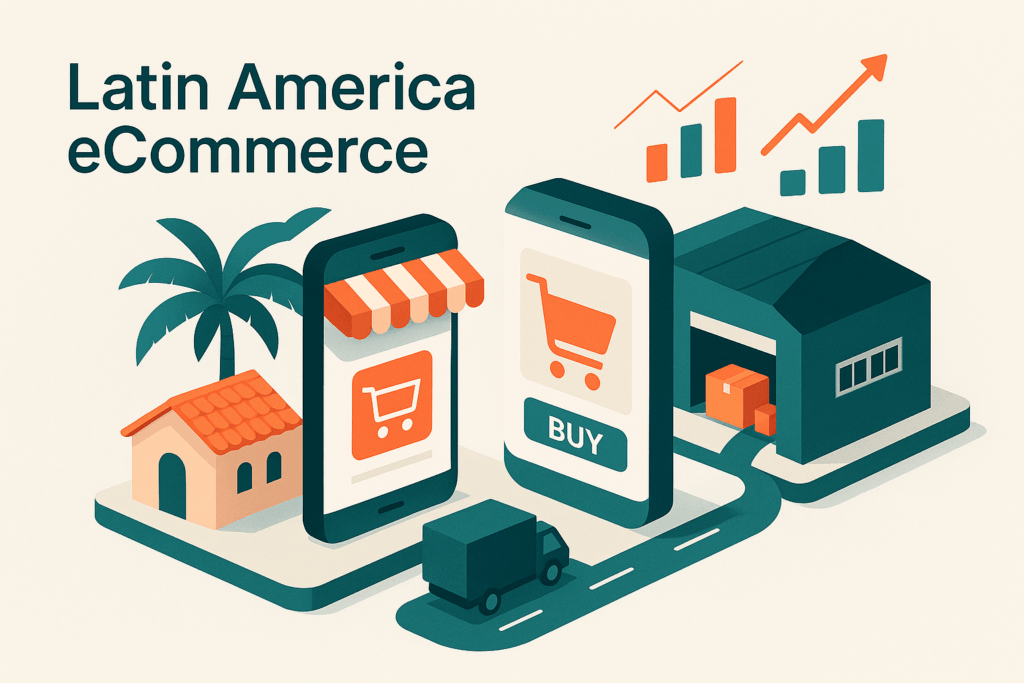No one can deny how expansive the eCommerce market has become. Global eCommerce sales are expected to nearly double to $6.5 trillion by 2023, and its share of overall retail sales is also increasing, particularly as a result of the COVID outbreak.
With that growth comes an evolving consumer base that can’t be swayed with old-school, brick-and-mortar experiences.
While brick-and-mortar stores have long offered events to bring in customers, the nature of the human attention span and the costs of maintaining a physical location long-term means the retail journey eventually becomes predictable. Online, however, the consumer expects their journey to continue as they visit their favorite sites, where they find compelling & relevant ads that are personalized for them, a simple purchasing option, and a fulfilling delivery process.
What is eCommerce Customer Journey?
The “eCommerce customer journey” refers to the steps involved in a client’s experience with an online store, from the time they first hear about its goods until the moment they make a purchase. A clean, smooth online experience has the ability to enhance your prospective consumers’ perceptions of your company.
For example, your website visitors will feel safe making a purchase if the website loads fast and without errors, offers clear pricing, and all with pages that are easy to browse, and customer support that is easy to reach. Alternatively, your visitors may bounce off if your website takes forever to load, unexpected costs appear, navigation of the product page is hard, or there are too many forms to fill out.
This results in an “interrupted customer journey” and a wasted opportunity.
So, How Challenging is it to Maintain an Efficient Customer Journey?
Is it really as easy as them going online, finding what they want, buying it, and waiting for it to arrive? Or, is the eCommerce customer journey more complicated than that?
As you can see, customers no longer merely buy a product; rather, they live through the entire experience of being a customer and engaging your brand characteristics, mission, and values. They buy into the simplicity of your processes, the information you give, and the convenience of your aftersales (and presales if necessary) customer service. So in order to encourage a potential customer to make a purchase, you must provide an exceptional customer journey.
Customers share their experiences with businesses and products everywhere.
This allows store owners to be active players in the development and fostering of a positive customer journey so they can drive more traffic and conversions.
Focus on your customers’ journeys as well as their relationships with you, whether you’re a little firm or a giant worldwide corporation.
Customer relationship management (CRM) software is highly recommended, especially if your organization is multichannel or omnichannel.
There are 4 Steps to Creating an eCommerce Customer Journey Map
1. Customer Perspective
The first and most essential thing to keep in mind is that your customer journey must be designed from the perspective of the consumer. As a result, take on the character of a normal client for a moment, and start the process as if you were one of your regular consumers, which can also help you understand the overall client personality.
Create a list of all the ways in which you can use your product or service to make money, and choose a product or service that your business offers. To get an idea of what’s included in the results, try entering different search phrases.
Check out any relevant content, such as reviews, articles, and blogs, among other things. Then go to your website to buy the product and take note of everything that might stop you from buying a service or a product.
2. Research for Improvement
Create a focus group from your primary demographic targets. They should, ideally, have no clue about which organization or brand put this group together.
Choose one of your products or services and invite the focus group to go online and discover it. Observe and document how they find the object, where they go on their journey, and what they experience as they do.
After the focus group has completed their research, compare the results to your first-hand experience. You can see if you and your consumers think alike by studying the two tasks, and you’ll also get a better picture of touchpoints and interactions.
3. Understand and Interpret
You now have a better sense of how your clients interact with you and how various touchpoints work. You must now understand what each of these activities means in terms of an engagement strategy.
Is there a specific touchpoint that performed exceptionally poorly? The information you’ve gathered allows you to determine the best course of action for remedying a pain point.
Your aim is for your eCommerce site to perform well at each of the touchpoints you (and your customers) have identified. Don’t forget to include independent touchpoints, such as review sites, as well.
4. Set Goals
You’ve begun the process of constructing your customer journey map. However, it’s not simply about recognizing the touchpoints and interactions you’ve accumulated thus far.
Identify the pain points that are most ideal for targeting. You may decide this based on how big of a problem it is, or how simple of an issue it is to resolve.
Once these are clear, set smart goals for ameliorating the issue. These will guide you as you establish KPIs, timelines for deliverables, and ideal results.
5. Create the eCommerce Customer Journey Map
You should now have enough information to figure out what the consumer is going through. The issue is that this information is difficult to comprehend, therefore you need to simplify it and develop a graphic that is easy to look at and understand.
It will be highly dependent on your own unique company strategy in terms of how you arrange it. You could opt to design some visuals, especially if you’re a larger organization with multiple teams working on separate projects.
If you have a specialized social media team, for example, you can opt to design a path map that focuses on social media touchpoints, pain spots, and experiences.
4 Ways to Learn More About Your Website’s Customer Journey Through Actual Customers
To enrich your Customer Journey Map or other visuals you’ll need to gather data — a lot of data. Looking at Google Analytics data (or another standard analytics program) is a typical first step in gaining insight into and improving your customers’ experiences on your site.
For example, you may study unique page views, the average time spent on each page, bounce rates, exit rates, and even how visitors utilize your site’s “search” bar. However, after some time, GA data won’t be enough to completely comprehend what’s going on or why.
And when that time comes, there are 4 ways to learn more about the performance of your eCommerce buyer’s journey:
1. Post-Purchase Surveys to Understand the ‘Engagement’ Stage
The buyer’s journey doesn’t have to end when they make a purchase. After all, you want them to come back and become loyal customers.
Sending a post-purchase survey by email to new clients and requesting their thoughts is an excellent approach to find out what kept them from converting and what might keep them from returning. Ask direct questions to the customer about their experience with the website such as load speed, navigation, accessibility, and prices.
This is one of the best ways to get fast and reliable answers. The responses you get from this practice can make your existing customers more fond of your brand and help new visitors to become loyal customers.
2. On-Page Surveys to Improve the ‘Intent’ and ‘Purchase’ Stages
On-page surveys aren’t only for the initial phase of research. In fact, they may be utilized at any stage along the client journey to gather feedback on how to improve the experience.
For example, you can use an open-ended survey question to find out which buyer’s journey pain points customers suffer the most. This may be done quickly with an open-ended survey question such as “What’s lacking on this page?” or “What is the biggest issue about this page?”
3. Heatmaps to Visualize the ‘Interest’ and ’Intent’ Stages
If you have changed your navigation menu relatively new, heatmap visualization will be a lifesaver for you. You can see how people are interacting with your menu, and you can change the placement of certain CTAs or buttons according to this visualization.
4. On-Site Survey to Learn More About the ‘Discovery’ Stage
A survey on your most popular traffic pages (for example, on your website’s homepage) will assist you in learning more about the initial contact stage of the customer journey. This helps you to understand what drew potential customers to your site or a certain sub-section of it.
How eCommerce Businesses Can Improve Their Customer Journey
It may be scary for businesses that are new to creating and improving the customer journey, but don’t be scared. All you have to do is operate according to the data that you acquired from your customer or other sources from your website.
It’s one thing to map out the customer journey; it’s another to know how to act on the data you’ve gathered and improve the customer journey and experience.
Strategy 1: Optimize Your Website For Every Device.
It’s worth noting that mobile devices account for almost half of all internet traffic. As a result, if your website fails to operate well when viewed on a mobile device, you are effectively alienating half of your prospective consumer base.
To provide a positive experience for everyone, optimization is essential. In the realm of mobile web design, Google has suggested using responsive architecture.
Google claims that responsive websites will rank higher in search results since they provide a superior user experience than non-responsive sites. Furthermore, instead of employing numerous URLs for various mobile versions of the same website, Google prefers responsive sites that use a single URL across all platforms.
Strategy 2: Proactive Customer Support is a Must.
Don’t sit back and wait for issues to arise before contacting clients.
Anticipate the most prevalent problems or questions, and provide answers and solutions that will make your customers pleased.
There are several advantages to providing proactive client service.
Improved Customer Retention
You’re more likely to have elated, loyal consumers if you’re proactive.
Increased Productivity and Communication
Being proactive will help you have better communication.
As a result, your employees will be able to spend more time listening and assisting clients who contact them, as well as gathering more data and information.
You’re probably already using video and chat collaboration tools for your sales team, so why not make sure you have effective customer communication capabilities?
Fewer Calls to Your Support Team
Customers will make fewer calls to you if you can solve problems before they occur, allowing your staff to focus on more complex issues and reducing wait times.
More First-Time Clients
Customers speak highly of the exceptional service they get, which includes proactive assistance. When consumers are pleased with their purchases, they may encourage others to try it out.
Strategy 3: Have Touchpoints at Every Stage Possible.
Any point at which a consumer interacts with your brand is considered a touchpoint. Interacting with an ad, visiting your website, reading third-party evaluations, contacting your company for shop locations, and lastly making a purchase are all examples of touchpoints.
Touchpoints are required at every step of the client journey’s five stages that we previously discussed, as each touchpoint has a role to play in the client journey’s optimization. As a result, each contact point you build must have a clear purpose (attracting interest, minimizing checkout time and complexity, etc.).
It’s critical to establish many touchpoints that are appropriate for their phases and function properly.
Strategy 4: In 2022, Personalization is a Necessity, NOT a Luxury.
People like a human touch, and this is true whether in real life or in online purchasing and eCommerce marketing. That means going beyond simply using their name (which you can accomplish with website automation or marketing emails) to understanding their specific interests and purchasing history.
You may give a customized approach by using methods like dynamic content marketing, which can adjust information based on buying preferences, geography, age, gender, and other factors. This can lead to more sales and improved client retention.
When it comes to customizing the client journey, automation and analytics may be the two driving forces, so make the most of them.
Smaller firms may fear that these expectations would overwhelm them, but with so much technology and automation accessible on a budget, it isn’t that tough to meet them.
There are several mobile applications for small company owners that may help with things like communications and social media posting, so look into which ones can both benefit you and save you money.
Strategy 5: Keep Gathering as much Data as Possible and Always Be Ready to Adapt
Data gathering isn’t something you do once and then forget about. Collect as much data as possible in the beginning, but continue to do so throughout the process.
Collect data on customer behavior and the customer lifecycle, as well as general information, through surveys, polls, and other means on your social media platforms and by email. The information you gather is a valuable resource that may be used for a variety of purposes.
Of course, data gathering is only one aspect of the process; analysis, understanding, and putting it to good use are all equally important. Consider utilizing one of many tools to help you, such as Google Analytics, and ecide which metrics are most essential to you; a good KPI might be used to show that your company is doing well.
Collecting & Analyzing Consumer Data Helps You See How Your Ideal Consumers Behave Online.
It aids in the identification and segmentation of specific demographics. It also helps you to gain a better understanding of what customers want, and to find methods to improve the entire customer experience throughout the customer lifecycle.
A larger database allows you to use a variety of strategies. For example, instant messaging can be a great way to boost your eCommerce sales.
You have a better understanding of which of your marketing tactics and campaigns worked effectively by gathering data on a regular basis. The more data you have, the easier it will be to determine which kind of campaigns are most effective, as well as which platforms reach the most of your desired consumer base and create the most leads.
Conclusion
Learning and adapting to customer behavior and psychology has never been more crucial. Because of the large number of platforms, channels, choices, alternatives, and rivals accessible today, selling has never been more difficult.
It’s time to scrutinize your customer profiles and their path if you want to grow your business. The key to dominating a market is to foster a habit of always learning more about your consumers and attempting to give them greater value in their lives.
Try to keep consistency in your client interactions and provide the same outstanding customer journey. This is valid for all channels, platforms, and touchpoints through which your clients interact with you.
The key is to apply the method in a way that generates positive results. When you do this, you’ll get more attention and sales.
In the end, the brand that can most effectively influence the market will triumph.
To get the most out of your efforts and increase your profits, contact Optimum7 for further support and guidance.
FAQs
How do you create a realistic customer journey map?
You must gather customer information and identify both crucial and less important touchpoints in order to create a more usable customer journey map. We advise managers to directly ask consumers the touchpoints they encounter when navigating a service organization.
What is the first step in the eCommerce Customer Journey?
Awareness is the first step. Customers should be able to understand what you’re offering to them, and your message should be clear, consistent, and easily identifiable.
Why is the customer journey important?
Customer journey mapping is critical since it is a strategic method for better understanding customer expectations. It’s also critical for improving consumer satisfaction.



